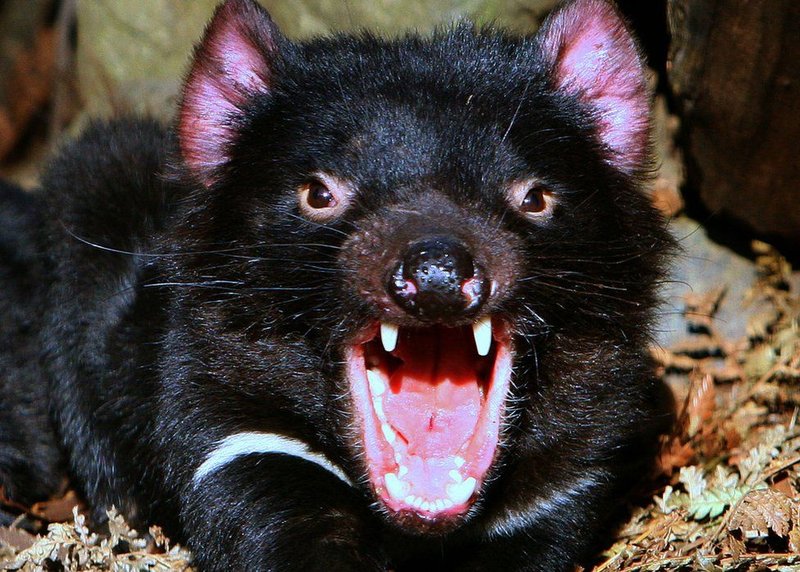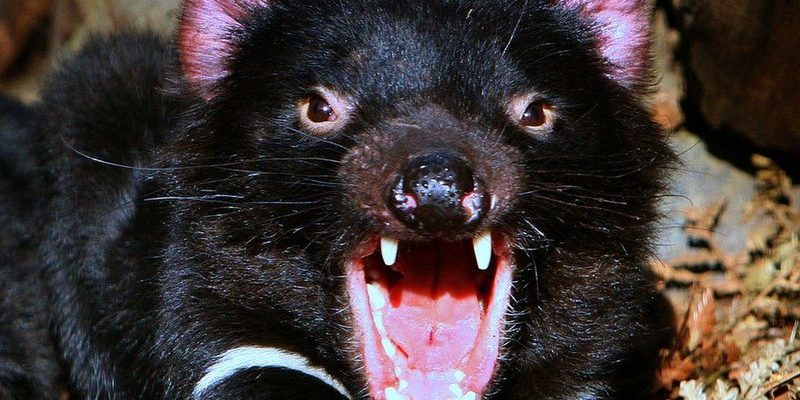
Imagine you’re sipping coffee with a friend, discussing the wild creatures of the world. The Tasmanian devil, with its dark fur and bone-crushing jaws, makes for quite an entertaining topic. They’re not just cute little guys; they’re also an important part of their ecosystem. But how dangerous can they really be? In this article, we’ll break down everything you need to know about this intriguing animal and whether it’s a potential threat to humans.
Understanding the Tasmanian Devil
The Tasmanian devil, or *Sarcophilus harrisii*, is one of the largest carnivorous marsupials in the world. They have a stocky build, short legs, and a surprisingly loud growl that can send chills down your spine. They’re mostly nocturnal, spending their nights scavenging for food and searching for mates.
Primarily, these creatures feast on carrion, which includes dead animals. This diet makes them crucial for the ecosystem, as they help to keep the environment clean. By eating decaying matter, Tasmanian devils play a unique role in their habitat, much like nature’s little clean-up crew. However, their aggressive nature can sometimes lead to conflicts with larger predators and even each other, particularly during feeding.
Behavior and Temperament
You might think of the Tasmanian devil as a cute but feisty animal. While they can look adorable, they also have a reputation for being tough and territorial. Their behavior is often characterized by loud vocalizations, hissing, and a tendency to fight over food. These creatures aren’t afraid of confrontation, and that’s where some of the danger lies.
Honestly, if you stumble upon a Tasmanian devil while hiking in the woods, your first instinct might be to snap a photo. But it’s vital to keep your distance. In the wild, these devils can display aggressive behavior, especially if they feel threatened or cornered. Just like you wouldn’t approach a wild bear, it’s best to admire these creatures from afar.
Are Tasmanian Devils Dangerous to Humans?
So, here’s the question: can Tasmanian devils actually harm a human? Generally, they aren’t known to attack unless provoked. They’d much rather flee than confront a human. However, if a Tasmanian devil feels trapped or frightened, it may bite as a form of self-defense. While their bites are strong, they are not usually life-threatening to humans.
Most reported incidents of aggression involve people getting too close or attempting to handle the animals. It’s essential to respect their space and allow them to roam freely in their natural habitat. Remember, they’re wild animals with instincts that can lead to unpredictable behavior. The best way to stay safe is to enjoy watching them from a comfortable distance.
Encounters with Humans
While serious encounters between Tasmanian devils and humans are rare, there have been instances where people have come too close for comfort. Wildlife enthusiasts and researchers working with these animals often take precautions to avoid any potential harm. It’s crucial to understand their behavior and create a safe environment for both humans and devils.
In parks and reserves, keep a lookout for signs that warn visitors about the presence of Tasmanian devils. These signs are there for a reason! The parks aim to protect both the wildlife and visitors. If you see a Tasmanian devil, enjoy the moment, but give it plenty of space so it can feel safe and secure.
Tasmanian Devils and Disease
Another aspect to consider when discussing the Tasmanian devil is the risk of disease. Unfortunately, this species has been facing a severe threat from a contagious cancer known as Devil Facial Tumor Disease (DFTD). This disease is lethal and has significantly reduced their population in the wild.
While this disease poses no direct threat to humans, it’s a reminder of how fragile wildlife can be. The conservation of these animals is vital, not just for their survival but for the overall health of their ecosystem. Supporting conservation efforts is a way we can help ensure that future generations can learn about and appreciate these fascinating creatures.
Conservation and Protection
With the decline of the Tasmanian devil population due to various factors, including disease and habitat loss, conservation efforts are crucial. Organizations and governments are working hard to create protected areas and breeding programs to help boost numbers.
You might be wondering how you can help. Supporting wildlife sanctuaries and conservation programs can make a real difference. These initiatives often rely on donations and community awareness. By spreading the word about the plight of the Tasmanian devil, you can contribute to a larger movement aimed at preserving this unique species.
In conclusion, while Tasmanian devils can be fierce and territorial, they are not generally dangerous to humans. By understanding their behavior and respecting their space, we can appreciate these fascinating marsupials without fear. Everyone can enjoy the thrill of spotting a Tasmanian devil in the wild—just remember to keep a safe distance!
Let’s not forget the important role they play in their ecosystems. With ongoing conservation efforts, we can hope for a future where Tasmanian devils thrive in their natural habitat. So next time you think of a Tasmanian devil, remember to appreciate their quirky charm and the vital role they play in the circle of life!

